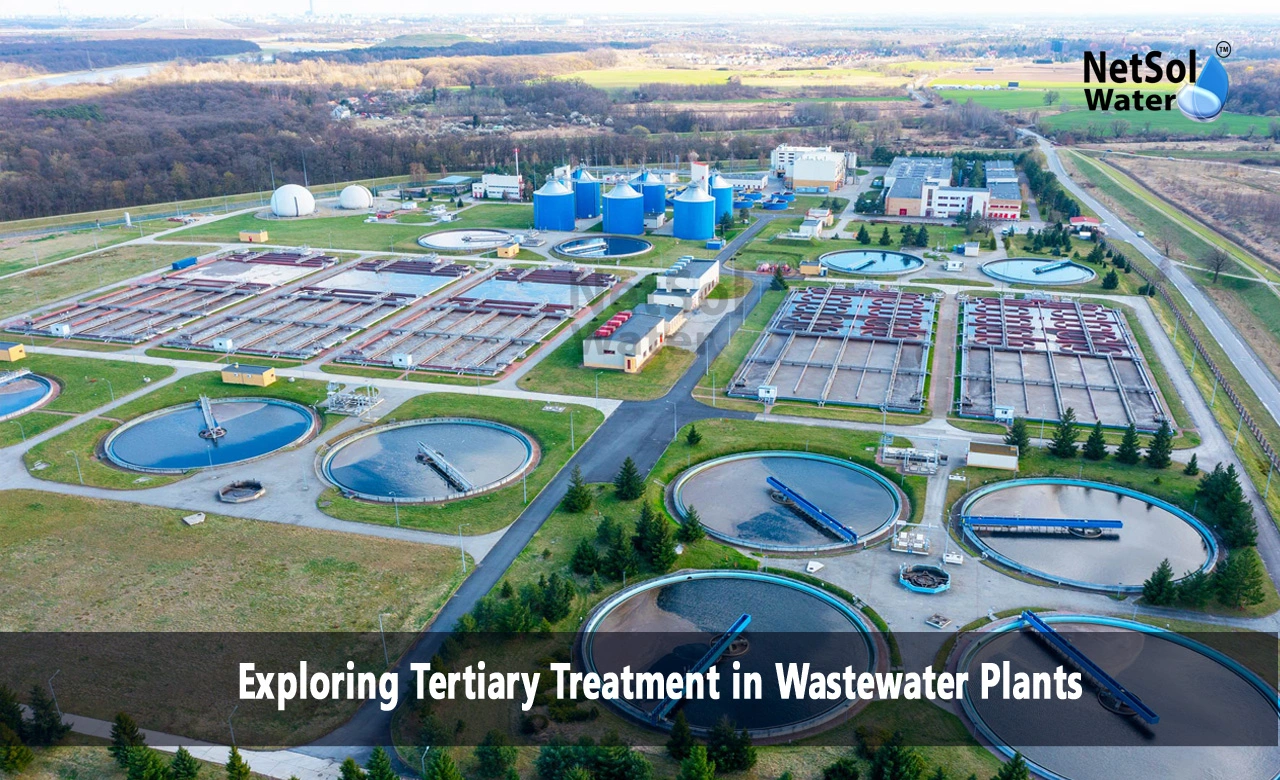Exploring Tertiary Treatment in Wastewater Plants
As communities face increasing pressures surrounding water scarcity, discharge regulations, and public health protection, wastewater treatment plant operators find themselves weighing the merits of implementing advanced tertiary treatment processes. Conventional primary sedimentation and secondary biological treatment effectively reduce loads of basic contaminants like suspended solids, organic material, and bacteria. However, questions remain around whether additional "polishing" steps targeting micro-pollutants, nutrients, disinfection, and further purification offer prudent investments in enhanced effluent quality and safety. We will Exploring Tertiary Treatment in Wastewater Plants. So, let’s begin..
What is Tertiary Treatment?
Tertiary treatment encompasses a range of physical, chemical, and biological processes, providing an additional level of treatment beyond secondary treatment methods like activated sludge. While specifics vary based on effluent quality targets, common tertiary processes include:
Filtration: Granular media, micro-screens, and membrane filters remove remaining suspended solids down to 1 micron
Disinfection: Chlorination, ozonation, and UV radiation deactivate pathogens and bacteria
Nutrient Removal: Biological nutrient removal targets nitrogen and phosphorus
Advanced Oxidation: Oxidants like ozone, peroxide, and UV/catalysts break down micro-pollutants
Ion Exchange: Resins and activated carbon remove heavy metals, total dissolved solids
Potential Benefits
The primary anticipated benefit driving tertiary treatment adoption centers around enhanced effluent quality positioning utilities to:
Meet Stringent Regulations
With water quality standards tightening and contaminants of emerging concern under greater scrutiny, discharge permits impose strict limitations on conventional pollutants as well as new parameters like nitrogen, phosphorus, endocrine disruptors, pharmaceuticals, and more. Tertiary treatment provides a proven compliance solution.
Enable Water Reuse
By further reducing solids, pathogens, and dissolved contaminants, water treated through tertiary processes often achieves quality suitable for beneficial reuse in industrial processing, irrigation, surface water augmentation, and even potable applications. This increases supply resilience.
Protect Ecosystems
Micro-pollutants, excessive nutrients, and undesirable solids discharged from conventional treatment negatively impact aquatic environments, threatening fish and wildlife while potentially contaminating downstream water supplies. Tertiary polishing proves protective.
Improve Public Perception
As general public awareness around water quality and environmental footprints amplifies, utilities can leverage tertiary treatment to demonstrate tangible sustainability commitments and reinforce stakeholder confidence.
Potential Drawbacks
Despite tertiary treatment's efficacy enhancing effluent quality, operators must carefully weigh advantages against various inherent challenges:
Higher Capital and Operating Costs
Integrating membrane filters, UV disinfection, or other advanced treatment systems into existing plants requires substantial construction and equipment expenditures beyond conventional treatment. Ongoing chemical, energy and residuals management incurs extra operating overhead.
Increased Technical Complexity
Process automation, residuals handling, monitoring, and maintaining tertiary treatment assets places extra operational and workforce training burdens on utilities. Robust IT/SCADA infrastructure becomes even more critical.
Permitting and Public Scrutiny
With visibility around water reuse and environmental impacts heightened, tertiary treatment projects garner public interest and regulatory oversight. This increases administrative management obligations throughout planning, construction and compliance reporting phases.
Footprint Constraints
Many existing treatment facilities find themselves boxed in without extra land available to site new tertiary treatment processes without demolishing existing infrastructure first. Creative retrofits, modular installations or acquiring new property may be necessary.
Climate/Environmental Considerations
Depending on technologies implemented, tertiary treatment's additional chemical use, energy demands, residuals generation, and embodied carbon footprint warrant evaluation against expected benefits.
Deciding Factors
Key deciding factors pushing wastewater utilities toward implementing advanced tertiary treatment generally include:
• Insufficient existing treatment capacity to handle population growth
• Increasingly stringent discharge permitting and regulatory pressures
• Water stress elevating needs for reuse and supply augmentation
• Public scrutiny and environmental justice concerns over effluent quality
• Economic incentives like fee structures encouraging enhanced treatment
When facing these compounding drivers, tertiary treatment positions utilities to get ahead of evolving water quality standards while boosting public confidence and readying for a future of water scarcity.
On the other hand, utilities may deprioritize tertiary treatment investments where:
• Existing discharge meets current permit limits
• Available finances limit near-term construction expenditures
• Downstream water supplies remain reliable eliminating urgent reuse needs
• Aging infrastructure priorities dominate capital planning
• Limited budgets constrain additional operational/maintenance overhead
Ultimately, tertiary treatment cost-benefit assessments rely heavily on each utility's specific circumstances and future outlooks around supply resilience. As clean water grows more precious, tertiary processes become increasingly compelling.
Conclusion
From nutrient removal and disinfection to descalination and targeted contaminant oxidation - the advantages tertiary treatment provides in compliance, environmental protection, and water supply augmentation remain unmatched.
However, this enhanced performance undoubtedly comes at major cost premiums - both in initial capital investments for new processes as well as ongoing technical operational complexity that treatment plant staff must be prepared to manage. These financial and resource hurdles may prove too high for some utilities with limited budgets and operational staff capacity. As with many environmental control decisions, each community must carefully evaluate implementing tertiary treatment according to its own unique circumstances weighing urgencies around receiving water impairment, growth straining existing treatment capacity, overall water supply scarcity, discharge permitting pressures, and public scrutiny around emerging contaminants and water reuse.
Netsol Water is Greater Noida-based leading water & wastewater treatment plant manufacturer. We are industry's most demanding company based on client review and work quality. We are known as best commercial RO plant manufacturers, industrial RO plant manufacturer, sewage treatment plant manufacturer, Water Softener Plant Manufacturers and effluent treatment plant manufacturers. Apart from this 24x7 customer support is our USP. Call on +91-9650608473, or write us at enquiry@netsolwater.com for any support, inquiry or product-purchase related query.



